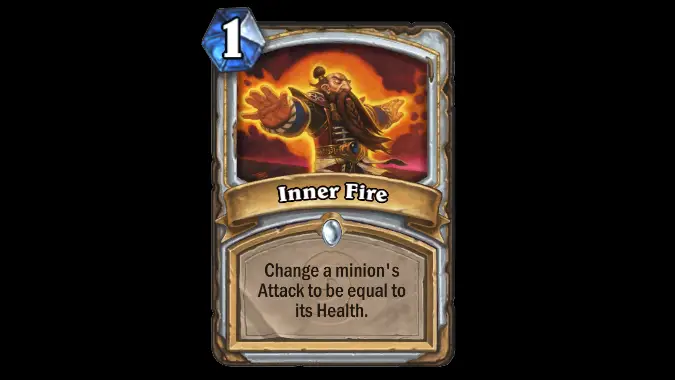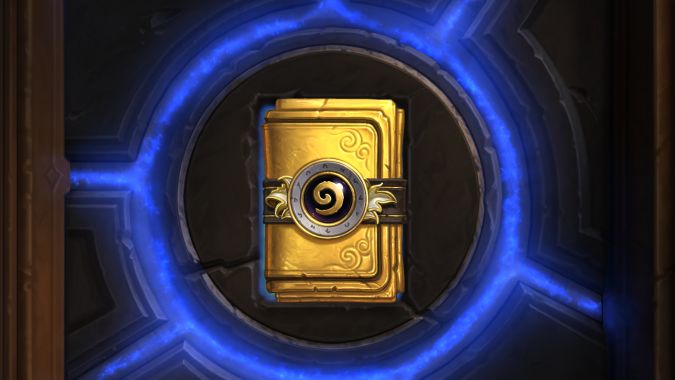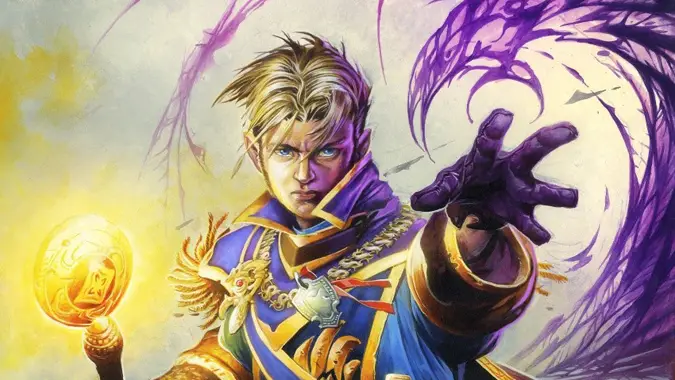Leeroy Jenkins (and other game-changing cards) retiring to Hearthstone’s Hall of Fame

Every new Hearthstone year — Year of the Phoenix is starting soon — sends cards to the Hall of Fame. If you aren’t really familiar with the Hall of Fame, Hearthstone has two formats for Ladder play:
- Wild, where you can play every card ever made
- Standard, where you’re limited to cards from certain sets
When the year rotates, certain sets vanishes from the Standard rotation entirely, and certain cards get moved to the Hall of Fame, never to be seen in Standard play again. These are cards that the developers decided aren’t healthy for the game’s meta. They’ree so unique or powerful, they make each meta seem too much like the last. These cards are also removed from Standard and go into the Hall of Fame. Players can only put them in Wild decks.
When Ashes of Outland releases on April 7, it will join Rise of Shadows, Saviors of Uldum, and Descent of Dragons (including all the cards from Galakrond’s Awakening) as the only cards available for Standard play.
Honor’s Hammer won the costume contest at the Realm Makers writer’s conference with this Leeroy Jenkins cosplay
The newest Hall of Fame inductees
Five cards are going into the Hall of Fame this year: Leeroy Jenkins, Mind Control Tech, Acolyte of Pain, Spellbreaker, and Mountain Giant. All of these cards will mean some significant changes for winning decks:
- Leeroy Jenkins – Leeroy was one of the last remaining Charge minions. Charge hasn’t been a fun mechanic and Hearthstone has been phasing it out for some time. Leeroy fit into any aggressive deck as a great way to end the game. Even today, you’ll see him in about half the decks played. It was time for him to go.
- Mind Control Tech – This minion helped slower decks against decks that liked to flood the board. While a fairly easy card to play around, he provided too much of a swing for the developers taste. He doesn’t see play in the current meta.
- Acolyte of Pain – Card draw is important to any deck. Acolyte could give you from 1 to 3 cards for 3 mana, plus a minion on the board. With card draw intended to be the Demon Hunter’s class strength, the developers needed to remove Neutral sources. Acolyte gets used in 8% of current meta decks.
- Spellbreaker – Along with Ironbeak Owl, Spellbreaker provided one of the few Neutral sources of Silence. The developers said they wanted to open up this design space. Let me translate that for you: we’re probably going to see a reprint of Spellbreaker in a rotating set soon. Spellbreaker only appears in 3% of current decks, so this isn’t as big of a change as the rest of the list.
- Mountain Giant – Mountain Giant was a staple in Handlock decks and later in Conjurer Mage. Both decks loaded their hands with cards to drop this low cost 8/8 on the board. Conjurer’s Mage followed up with a Conjurer’s Calling creating two 10 mana minions on the board. Neither deck is particularly strong right now, and Mountain Giant only sees play in 5% of decks.
An overhaul to Priest sends plenty of cards packing
As part of the major Priest overhaul this year, six Priest cards are headed for the Hall of Fame: Auchenai Soulpriest, Divine Spirit, Prophet Velen, Holy Fire, Northshire Cleric, and Shadowform. Some, but not all of these cards see regular play:
- Divine Spirit, Velen, and Auchenai are important cards for various OTK (one turn kill) scenarios.
- Holy Fire and Shadowform provide Priests with offensive capabilities.
- Northshire Cleric is a powerful draw engine. Like Acolyte of Pain, they need to remove other powerful draw cards to enforce the Demon Hunter class identity.
What’s odd is that, with the exception of Northshire Cleric and Divine Spirit, the rest of these cards don’t see play. Combo Priest uses the Divine Spirit / Inner Fire combo but has a sub 50% win rate. Most Priest players are using a form of Resurrect Priest either with or without the Activate the Obelisk Quest.
Perhaps the developers saw the potential for an OTK deck with either Velen or Divine Spirit during their play testing of Ashes of Outland — otherwise these cards don’t make a lot of sense.

But it’s one of the cards the developers ignored that’s really curious: Inner Fire.
There are still plenty of cards — like Power Infusion — that allow the Priest player to build a high-health minion. All it takes is Inner Fire to turn all that health into an attack and score the OTK (one turn kill).
My theory is the developers are hedging their bets. There have been many times in Hearthstone’s history, some recently, where the Divine Spirit / Inner Fire combo was the only competitive deck Priest had. If whatever they have planned for Priest doesn’t work, Priest mains can still use Inner Fire to steal some wins.
Which begs the question: what do the developers have planned for Priest? What do they expect Priest’s strategy will be going forward? In the Class Identity blog post last June, the developers spelled out their vision for Priest:
- Strengths: Healing, narrow but powerful spells, copying, single-minion buffs, Deathrattle
- Limitations: Card draw
- Weaknesses: Face damage spells, multi-minion buffs
Given this vision statement, the changes makes sense. Velen, Auchenai, and Holy Fire are at odds with the Face damage spells weakness. Northshire works against the limitation of card draw.
The problem is Healing as a strength has never worked in Hearthstone. Currently, Priest struggle to outheal decks like Dragon Hunter. Simply outlasting your opponent has worked in certain metas, but not since Descent of Dragons released. With Pyschpomp, Mass Resurrection, Convincing Infiltrator, and Khartut’s Defender all still in Standard in Year of the Phoenix, I expect Resurrect Priest will stay the main Priest deck, unless something creative comes from the Ashes of Outland cards.

New Hall of Fame cards mean you can earn Dust
Players will receive a Dust refund for all of the Hall of Fame cards they own — plus they get to keep the cards in their collection for use in Wild games. You only get dust for one copy of the card, so if you own both the Golden and regular version, you’ll only get dust for the Golden. This often brings the question of should you craft a Golden version of a Hall of Fame card you don’t have prior to rotation. If you’re willing to disenchant the card after rotation rather than use it in Wild, then you’ll come out ahead on dust.
The Hall of Fame rotation is happening on March 26th, well ahead of the Ashes of Outland release. Enjoy Leeroy and Mountain Giants for one more week.
Please consider supporting our Patreon!
Join the Discussion
Blizzard Watch is a safe space for all readers. By leaving comments on this site you agree to follow our commenting and community guidelines.
 @honorshammer
@honorshammer





